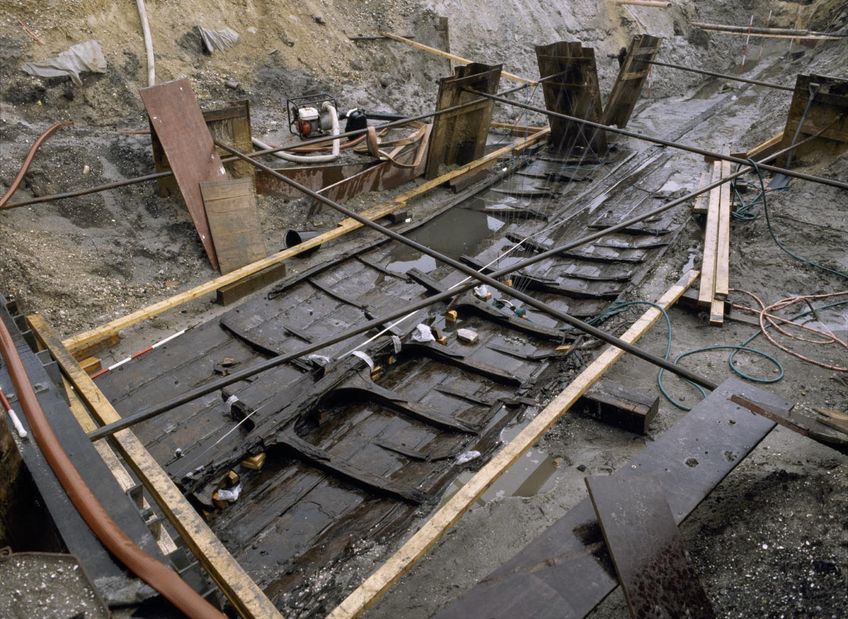The archaeological sources
Archaeologically, we can define a longship as a vessel which has made use of both oars and sail as a method of propulsion and which has a width/length index of 0.2 or less, i.e. the ship is at least 5 times as long as it is wide (see illustration). Corresponding proportions are found in oar-powered ships from the Iron Age, which did not carry sails and it can therefore be presumed that long slender vessels such as these were shaped with the intention of making them efficient under oar propulsion. There are also vessels from the early Viking times which were equipped with both oars and sails, but which are markedly broader than the rowed ships and longships. These can probably be considered as all-round vessels intended for voyages of both trade and war.
Archaeological findings of longships
Below you can find links to read more about the longships.
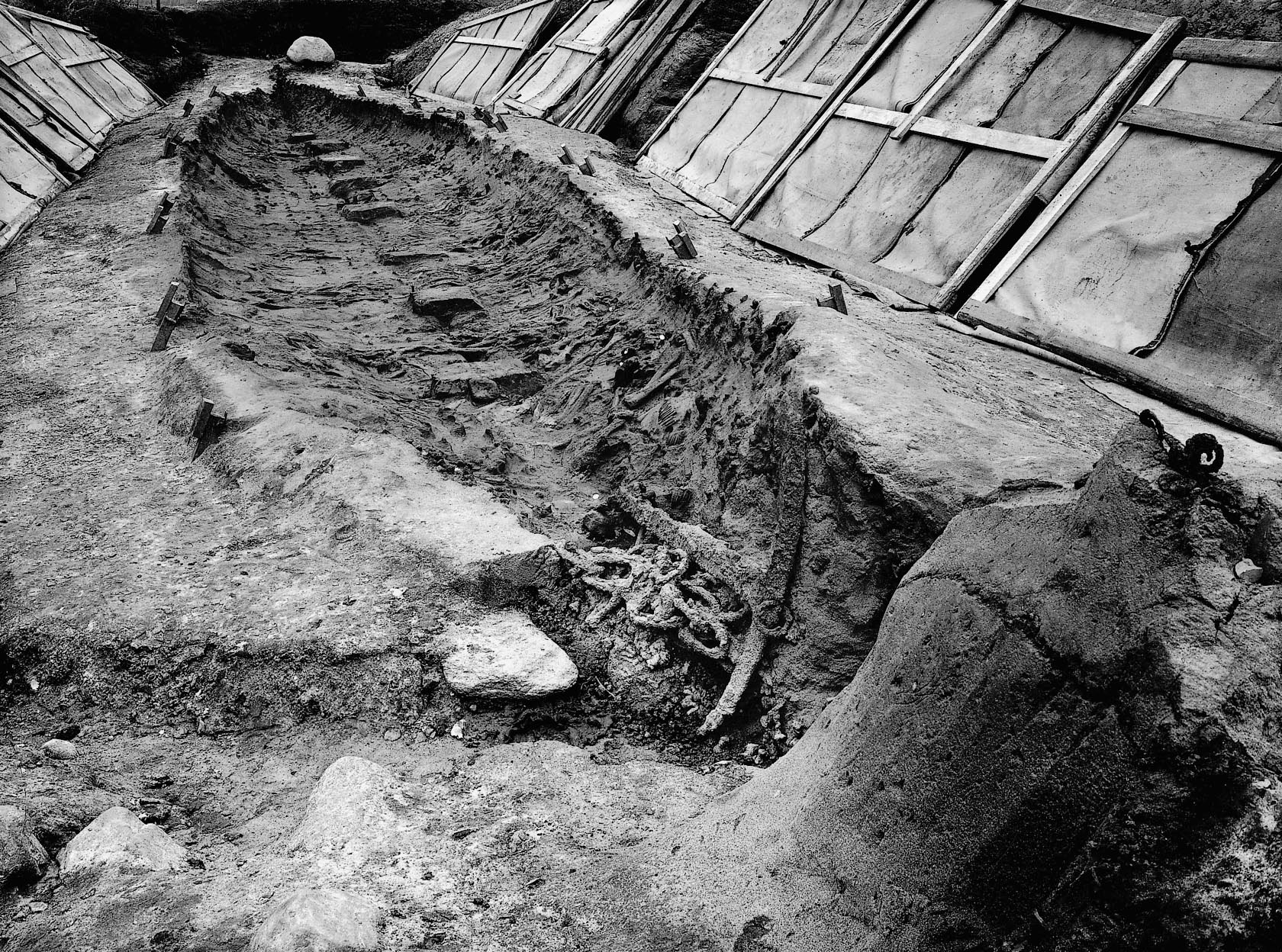
The first excavation of what we today with certainty would term a longship was carried out in 1934-36 at Ladby on Funen. The excavation was a disappointment in so far as it did not contain a well-preserved vessel such as those known from the Norwegian burial mounds from Tune, Gokstad and Oseberg. However, the neatly arranged rows of rivets quickly demonstrated to the excavators that it would be possible, at least approximately, to reconstruct the appearance of the ship. Consequently, the find circumstances were, in this respect, more favourable than for example those relating to the excavation of a ship chamber burial at Hedeby some decades previously, where an impression of the form of the ship remained very vague.
The Ladby ship was analysed and published for the first time in 1957 and although the reconstruction of the ship was later revised on several major points, even then it could be seen to be a long slender vessel, very different from the Norwegian Viking ships.
» Read more about the Lady Ship here...
The next longship turned up during the investigations of the marine barrage at Skuldelev from 1957 to 1962. Skuldelev 2 was a relatively poorly preserved, but very large, seagoing longship, whereas Skuldelev 5 proved to be a much smaller ship intended for use in Danish coastal waters. The ships could be dated to the 11th century and were, accordingly, about a century later than the dates for the latest of the Norwegian Viking ships, the Gokstad ship, and the Ladby ship. They were the first examples of longships from the conclusion of the Viking period. The preliminary reconstructions of the Skuldelev ships were published in 1968 and these, too, have subsequently been revised in the light of more recent and more detailed investigations.
» Read more about Skuldelev 2 here...
» Read more about Skuldelev 5 here...
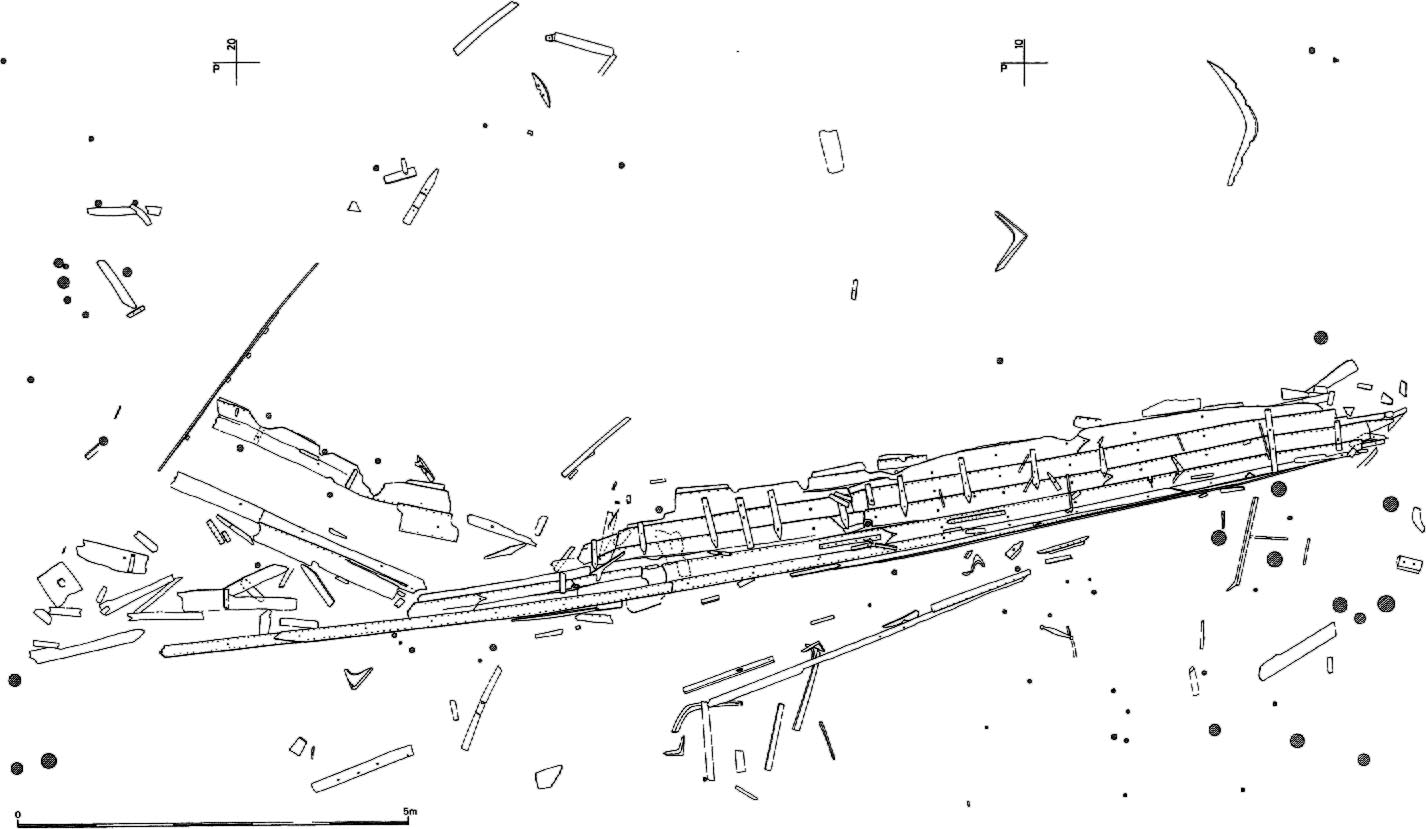
As early as 1953, remains of a Viking ship were found in the harbour off the large Viking Age trading site of Hedeby near Schleswig. However, it was first on excavation of the wreck in 1978-79 that it became clear that this too was a longship. The excavations, which were modelled on those of the Skuldelev ships, led to the recovery of the remains of an exceptionally elegant, very slender longship. The subsequent analyses of the remains of the ship revealed that they were from a more than 30 m long warship, i.e. a vessel of a length similar to Skuldelev 2 but of much more slender build, and presumably only intended for use in the Baltic and in Danish coastal waters.
» Read more about Haithabu ship burial...
» Read more about the longship from Haithabu Harbour...
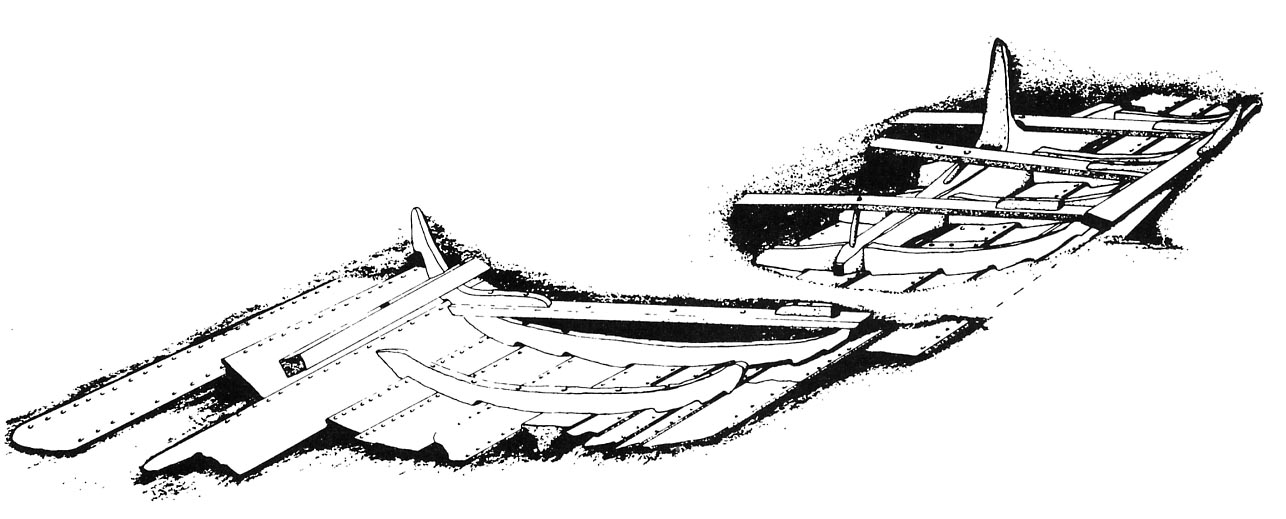
At the same time as the excavation of the longship from Hedeby Harbour, marine archaeologists were in the process of excavating the first non-Scandinavian longship, Puck 2, in the Bay of Gdansk on the Polish coast. The ship here was found in 1977 and analyses have revealed it to be a vessel which, in terms of its dimensions, lies between Skuldelev 5 and Ladby, but in terms of date lies closest to Ladby – Puck 2 can also be dated to the beginning of the 10th century. The ship was probably built by Slavic shipbuilders who, at that time, used almost the same construction methods as their Scandinavian counterparts and there are only a few features which reveal the ship’s non-Scandinavian origins.
» Read more about Puck 2 - a Slavic longship...
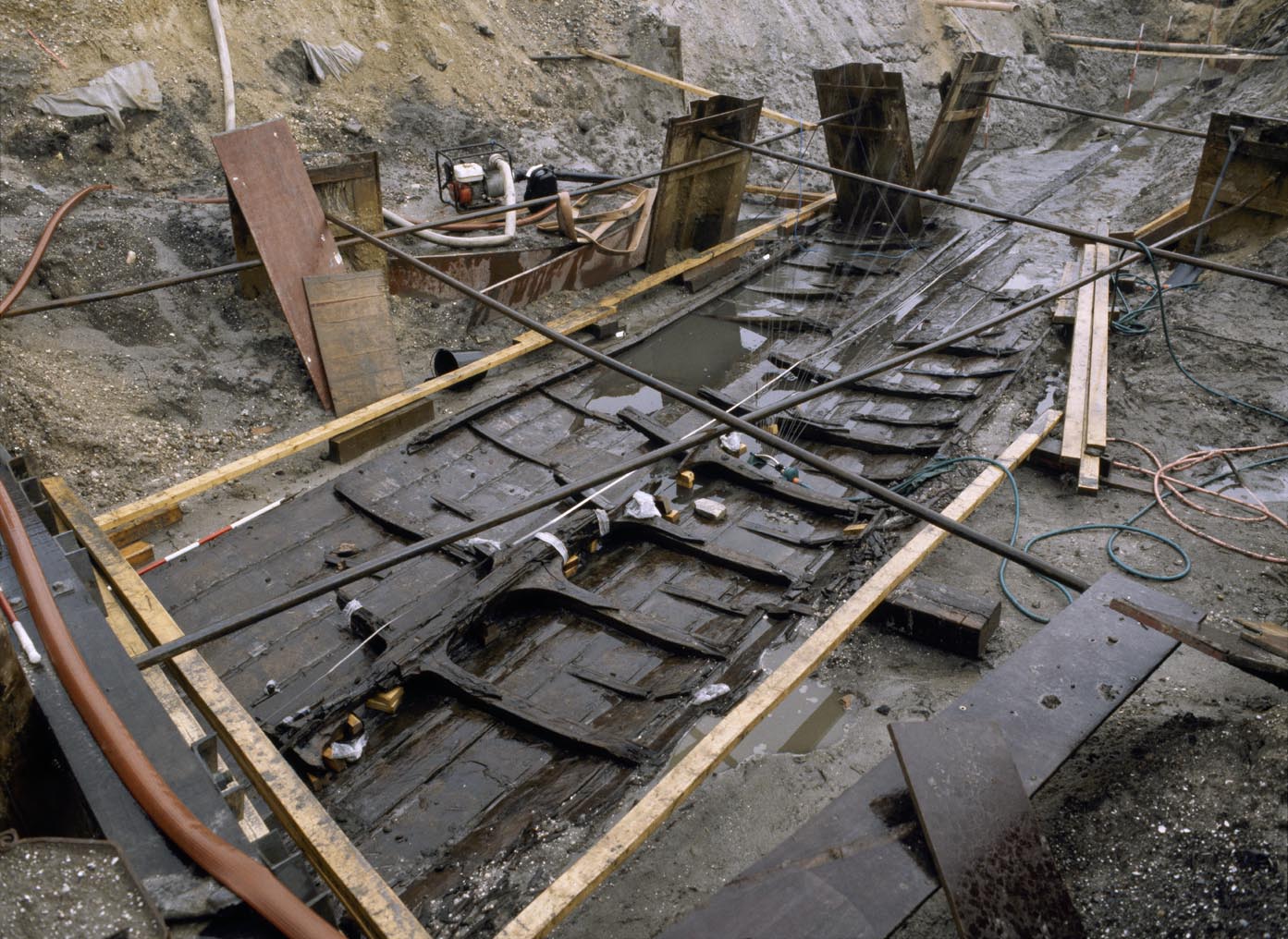
The longest longship was discovered during the construction of the Museum Harbour for the Viking Ship Museum in Roskilde in 1997, and bears the name Roskilde 6. This ship was built after AD 1025 and it had a length of around 36 m – the longest Viking ship so far discovered archaeologically. The ship was poorly preserved, but as the keel was preserved in its full length, it was not difficult to establish the length of the vessel. Neither Puck 2 nor Roskilde 6 have been fully analysed and both wrecks could yet produce many surprising contributions to our knowledge of longships from the Viking Age in and around the Scandinavian countries.
» Read more about Roskilde 6 - the world's longest Viking ship...
n addition to the surviving wrecks of longships, a number of wreck fragments and re-used ship’s components have been found which probably originate from this type of vessel. Wreck fragments from Hasnæs on the east coast of Jutland, dated to the middle of the 11th century, are an example of this. Among the parts which were recovered was a longitudinal reinforcement with notches to accommodate slender ribs, a characteristic feature of the great longships. There are two further finds of presumed longships from Foteviken, near Falsterbo in Scania. Here, a number of ships were used in connection with the construction of a barrage in the 11th/12th century. Only limited analysis of the vessels has been carried out, but two out of the five ships recognised so far are interpreted as being longships of more than 20 m in length. One of them, Foteviken 3, can be dated to the middle of the 11th century, while the other, Foteviken 5, was sunk in order to block the navigable opening in the barrage; this vessel could date to as late as the 12th century.
Archaeological findings of longships
Learn more about the longships we know today. Some were found in burial mounds, others in the Viking's harbours and others were recycled by the Vikings as part of defense systems of their main towns.
Below you can find links to read more about the longships.
» Ladby - the ship in the grave
» The longship from Haithabu Harbour
Danish text: Jan Bill
Translation: Gillian Fellows-Jensen
